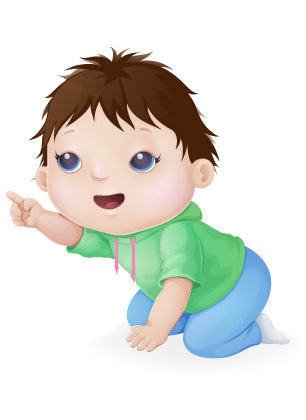
All babies have their own timetable, but you can watch for certain developments in your 11-month-old. Celebrate with your baby as she reaches or nears these milestones.
Cognitive
-
Understands how to use many objects (cuddling a stuffed toy, shaking a rattle, putting a cup to her lips)
-
Understands that objects have names
-
Understands object permanence well (looking for an object that’s hidden because she knows it’s there)
-
Has an expanding attention span, from two to three minutes at 8 months to 15 minutes at 12 months
-
Is attracted to novelty (new toys, objects)
-
Explores playthings in new ways (touching, banging, dropping)
-
Increasingly displays memory of recent events
Motor
-
Has good accuracy in picking up objects with fingers (pincer grasp)
-
Getting better at releasing objects from grasp
-
Points and pokes with index finger
-
Feeds self, though messily
-
May be able to put things into containers
-
Crawls quickly
-
Pulls up to a standing position
-
Stands with support (holding onto your fingers or furniture)
-
May stand alone briefly
-
May cruise along furniture
Communication
-
Gestures to communicate
-
Shakes head or frowns to express “no;” responds when told “no”
-
May hold out arms to be picked up
-
May recognize own name
-
Recognizes many familiar words
-
Understands many things said to her
-
Babbles in long groups of consonant-vowel sounds, like “tata upupup ba ba ba!”
-
Babbles using the cadence and inflections of real conversation
-
May use “Ma ma” and “Da da” to refer specifically to parents
-
May say other early words, though probably not with good pronunciation (“ba ba” for bottle, “mik” for milk)

Social
-
Accurately mimics the expressions and some sounds made by others
-
Imitates actions of adults and other children
-
Enjoys watching older children
-
Enjoys being around other babies but doesn’t yet play with them
-
Watches for your reactions (to banging, laughing)
-
Shows stranger anxiety (shyness around strangers)
-
Shows separation anxiety (crying or exhibiting distress when you leave the room), which peaks between 10 months and 18 months
-
Interacts more with family
-
Waves good-bye



